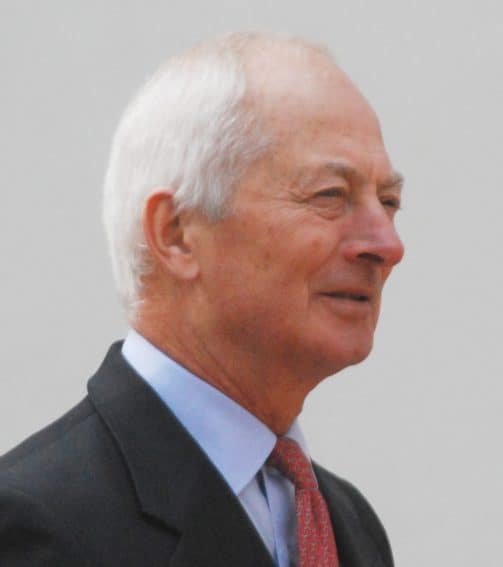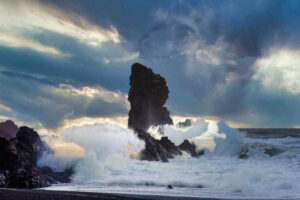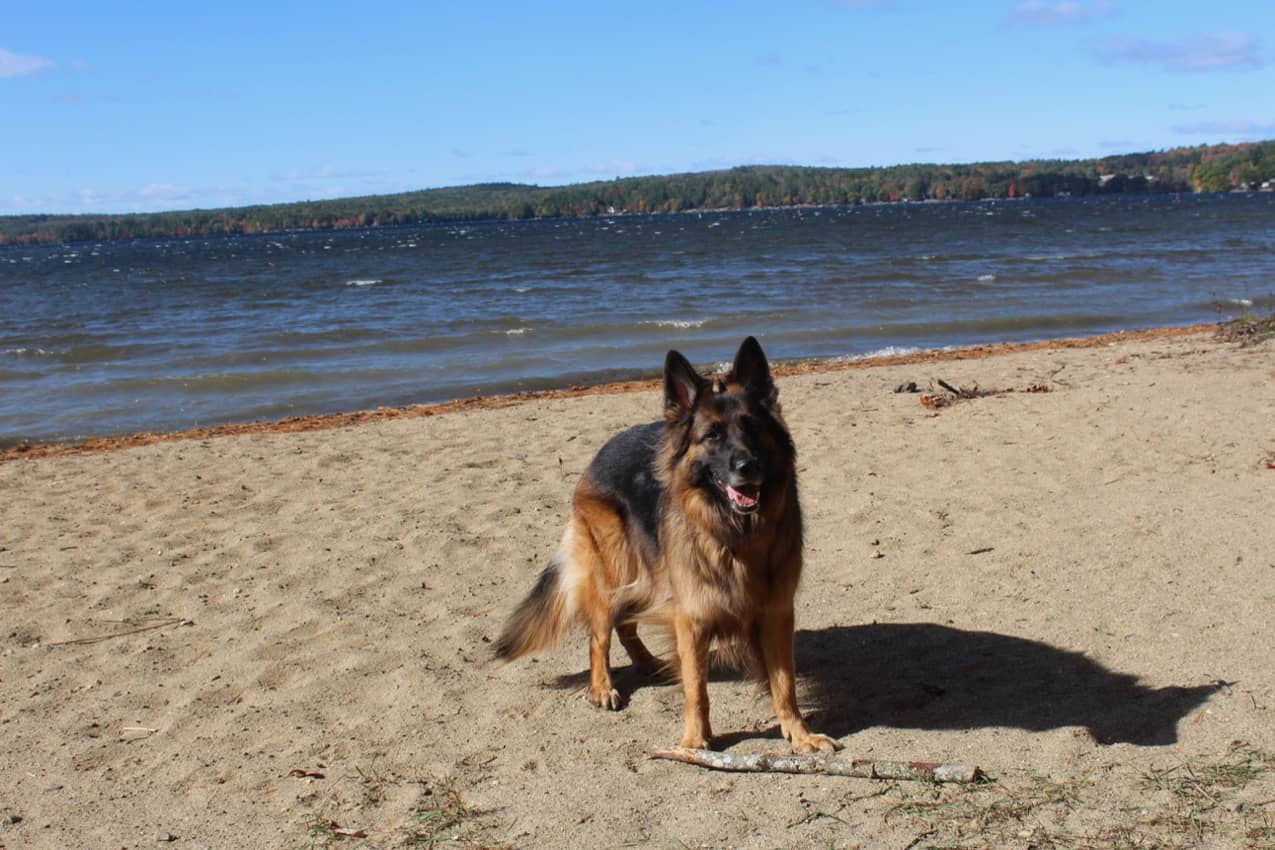
Living in Liechtenstein: Food and Friendly People at the Meeting of the Alps
By Maggie Freleng
Even though it’s the sixth smallest country in the world, only 62 square miles, Liechtenstein has a lot to offer the traveler: charming villages, excellent cuisine, breathtaking Alpine landscapes, friendly citizens, and a prince who jogs around town and says “hoi” just like everyone else.


Liechtenstein is a principality bordered by Switzerland to the south and west and Austria to the east and north. It is home to 36,000 inhabitants and has only 90 police officers.
It is a true landlocked country with neither an airport (the closest airport is in Zurich, Switzerland) nor a seaport.
It is the only country located entirely in the Alpine massif and it’s the spot where the western and eastern Alps meet, generating a perfect blend of land for cultivation; approximately 76% of the land is agricultural, forests and conservation areas.
There are eleven municipalities, or communities, of Liechtenstein, six upper (Oberland: Vaduz, Schaan, Triesen, Triesenberg, Balzers, Planken) and five lower (Unterland: Eschen, Mauren, Gamprin, Ruggell, Schellenberg).
Everyone Knows Everyone
German is the official language of Liechtenstein but each community has a distinct dialect determined by the annunciation of vowels. It is said in Liechtenstein that everyone knows everyone, and if someone does not know someone already, at least they can tell where he or she is from based on the dialect the person speaks.
Vaduz the capital of Liechtenstein, and is the residence of the princely family, Prince Hans-Adam II, and the seat of the 25 members of the Liechtenstein Parliament. Despite having the highest tourist population and being home to most of the tourist attractions, Vaduz is not the largest city in Liechtenstein; the neighboring municipality Schaan has a higher resident population. Schann is the central industrial center of Liechtenstein.
Planken is the smallest community in Liechtenstein. There are no shops and no frequent bus service to the top of the mountain, so people driving up usually give a helping lift to walkers. Trust me, no one wants to walk all the way up to Planken after work.

Planken is a very quaint and traditionally maintained community; all houses in Planken are made from wood and have beautiful flower baskets hanging from every window.
I definitely recommend visiting Planken to see one of the oldest and most traditional communities in Liechtenstein. Bring a picnic or a blanket and hang out on a grassy knoll for a bit, looking out over the country, soaking in the peaceful atmosphere.
Triesenberg is the largest municipality by area and also the highest at 6,562 feet (2,000m) above sea level. Triesenberg is a great starting point for hikes up the mountaintop and visits to the areas of Steg and Malbun, tiny villages with only 100 people.
From Triesenberg, one has a truly spectacular view of the entire country and neighboring countries: Germany, Switzerland, and Austria.
Business and Industry
Liechtenstein has a good deal of industry, but it is not considered “heavy” to residents who are very proud of their beautifully scenic and quaint country. There are more than 30 large industrial enterprises that employ about 8,000 people in Liechtenstein.
While 76% of the land is agricultural only one percent of the population is in farming; most of the population is in some sort of business or industry and farmers sometimes need help from Switzerland to maintain the land.
The people of Liechtenstein are linked with the entire world via their internationally oriented and globally networked economy.
Liechtenstein is an “exclusive” country with the average person having an income equivalent to $115,000 per year, and the taxes are only four to eight percent because the large banking industry (14% of the population) helps keep them low.
Liechtenstein Citizenship is very restricted and hard to gain. One way to gain citizenship is to live in Liechtenstein for at least three years with a visa. After that the entire country votes on whether that person should become a citizen-based on whether he or she has a job and whether the skills he or she can provide are needed.
Another way to gain citizenship is to be married to a citizen of Liechtenstein for three years. The only way for non-citizens to live in Liechtenstein, if they are not married to a citizen, is to have a job in the country.

Diverse Wildlife
There are three types of landscape that can be distinguished: The Rhine Valley, the slopes facing the Rhine Valley and the Alpine region. Each of these regions has its own distinctive flora and fauna.
At least 1,600 plant species (including rare orchids) have been identified, about half of which grow in the Alpine region, and more than 50 mammal species, two dozen fish species, and numerous bird species make homes in these regions.
In 1989 the Alpine region was declared a plant conservation area with pastures reserved for cattle who spend the summer grazing there. It is not uncommon to be hiking the spectacular mountain trails and encounter stubborn cattle blocking your path. They are mostly harmless and used to people; just walk around them but always be wary of excrement landmines – they’ll get you.

The Alpine region is hardly affected by civilization and is almost completely intact. Deer, chamois, ibex, eagles, mountain hares, and the distinguishable marmot all live in the Alpine region.
Liechtenstein’s only venomous snake, the adder, can also be found in the Alpine region, so before traveling, hikers should be sure to practice keeping one eye on the ground and the other on the scenery.
The flora and fauna of Liechtenstein, particularly the Alpine region, make it a very desirable destination for excursions and vacations.
I would say when traveling to Liechtenstein, a majority of the time must be spent outdoors walking, hiking, biking or whatever it is you do to get in touch with your natural surroundings.
It would be a shame to visit this unique geographic region and not experience all its natural beauty. My favorite part of my visit to Liechtenstein, by far, was my day hike up to Sücka and back down after dinner on the mountain.
Saying “Hoi”

People in Liechtenstein don’t have uncomfortably formal ways about them; everyone is very friendly and laid back. Just say a casual “hoi” to anyone you see on the street; they will love it. It is an informal way and the proper way to say hello. In Liechtenstein, everyone is a friend, even the Prince.
Prince Hans-Adam II is notorious for going running on a regular basis through the streets of Oberland. He is not like the President or celebrities in the US who are closely guarded and monitored; he is just a regular guy who says “hoi” and chats with passers-by and just so happens to be a member of one of the oldest noble families in Europe.
On August 15th he holds a party at his castle with an open invitation for everyone in his country to attend.
Many famous people come to Liechtenstein to relax and get away in the quiet, fresh alpine culture. Usually, no one will bother them in Liechtenstein because they are considered regular people just like everyone else.
Because Liechtenstein is very small, everyone knows everyone in some way, or at least their family name. The people of Liechtenstein are very proud of their heritage, and many families have been known throughout the country for generations.
Of the 36,000 people in Liechtenstein, 78% are Roman Catholic and the rest are a mixture of Protestants, Muslims and others.

Cultural Experiences
The entire country of Liechtenstein can be seen in a matter of hours by car or bus. Stopping, sightseeing and walking around ads extra time but can still be done in less than a day.
However, there is so much Liechtenstein offers, why spend hours breezing through when you can spend days absorbing the beauty?
Public transportation in Liechtenstein is fantastic. The bus system is extensive and extremely cheap because the government supports public transportation to avoid traffic congestion on the one main road running through the country.
Definitely take advantage of the transportation if you would like to see the country on your own, but if you are looking for more of an educational experience, guided tours are also offered.
Guided tours through the city are offered on foot, by bus, or both. Guides share details about the history, economic development, government, people and culture.
Citytrain also offers tours every day from Easter to October. It is a 30-minute ride through Vaduz and its surroundings, supplying information on the history of the country, the sites and the princely home, the Vaduz castle.
The castle towers on a rock terrace overlooking the city and is the residence of the princely family, so the inside is off-limits. However, there are quaint hiking paths that can reach the castle grounds if you desire to visit.

For a rare experience, a chairlift can be taken up the Sareiserjoch at 6,562 feet (2,000 m) elevation to Triesenberg-Malbun where a mountaintop restaurant and an ideal starting point for many hikes can be found.
Vaduz is Where the Fun Happens
Vaduz is home to most of the fun in Liechtenstein. In Vaduz, there is tons of shopping and dining all along the main city strip. In the heart of the city is the Kunstmuseum.
The museum includes major works of European art covering over four centuries. The Kunstmuseum, founded in 2000, also presents a variety of traveling exhibits.
Right across from the Kunstmuseum is one of the Liechtenstein Tourist Offices where you can confirm your visit to Liechtenstein with a stamp on your passport.

Other museums in Vaduz is the famous Liechtenstein National Museum, the Kunstraum Engländerbau, and the FIS Ski Museum.
The Ski Museum is one of the largest collections of winter sports gear in the world and portrays the history of skiing from its origins to the present day.
The World of Princely Wines
Just a short walk outside of the city is the Hofkelleri, the world of princely wines. The vineyard covers ten acres of land and the main grape cultivated is the Blauburgunder.
Hofkelleri winery is a traditional winery fermenting grapes in steel instead of oak barrels. The winery has a very small production rate but it is of very high quality. Tasting sessions, seminars and tours are offered.
In Malbun is the Hotel Galina, which offers the Galina Falconry show during the summer months with Norman Vogeli. There are at least five birds ranging from an Albatross to a Golden Eagle.
The show lasts about 45 minutes, but for the extra time people may hike with Norman and the birds and experience them in their natural habitat as predators. Fearless guests at the show are encouraged to participate and help Norman handle some of the rarest species of birds found in the wild.

Sücka in Steg
A great experience for food and the outdoors is a hike to Sücka in Steg, a six-mile, (10 km) hike to a 5085-foot (1550 m) elevation, my favorite part of my trip!
At Sücka, overlooking the Alps, a delicious assortment of cheeses can be offered for tasting, ranging from Suara Käes (a naturally non-fat cheese), Emmental and traditional Swiss from Alpine cow. Cheeses are commonly washed down with Käse Knöpfle (spiked apple cider).
Be wary not to eat too much cheese during the tasting because generally if you are continuing the traditional food experience, the next meal up is Käsknöpfle (cheese noodle dumplings) a very heavy traditionally favorite.
Käsknöpfle can be ordered at almost any restaurant in Liechtenstein. I love Käsknöpfle but by the end of my trip I was definitely Käsknöpfled out.

Being a vegetarian in a predominantly meat-eating region of the world, some sort of cheese was just about my only option for cultural food experiences. Just know when traveling here that if you don’t eat meat, get ready to eat a lot of cheese!
After dinner at Sücka, we hiked back down the mountain to Malbun with only torches lighting our way. It was a fantastic end to a fun day of outdoor activities in the Alps.
Definitely Go!
I absolutely recommend traveling to Liechtenstein. Definitely go! This was an incredible place to travel. It is a truly unique country because of its size, location, and people. It’s close to Germany, Austria, Switzerland, and Italy if you are interested in traveling elsewhere.
It is minimally touristy and travelers can easily immerse themselves in the culture. The sheer magnificence of an entire country nestled in the majestic Alpine mountain range is particularly dazzling and just plain surreal.
The scenery, the crisp air and the peacefulness of Liechtenstein make it a must for people looking to get off the beaten path and it gives you extra bragging rights for visiting a country many people never even knew existed.
For a list of activities, dining, travel, and hotels, visit Liechtenstein Tourism and for more about Liechtenstein visit Digital Liechtenstein.

Maggie Freleng is a former editorial assistant at GoNOMAD. She now is a podcast producer in New York City.
Eurail Passes: What to Know about Buying a Europe Train Pass
- The Wild Mississippi: 2340 Miles Across Ten States - April 8, 2024
- Exploring the Floating Villages of Tonle’ Sap Lake - April 3, 2024
- Woman Traveling Solo on Turkish Buses - March 27, 2024






Hello,
i’m creating a school project about Liechtenstein and for some reason we’re not allowed to use wiki as a source. A classmate recommended this site http://www.confiduss.com/en/jurisdictions/liechtenstein/ as a legitimate source. Can you please confirm this or recommend any other site that i can use as a source? Thanks in advance 🙂